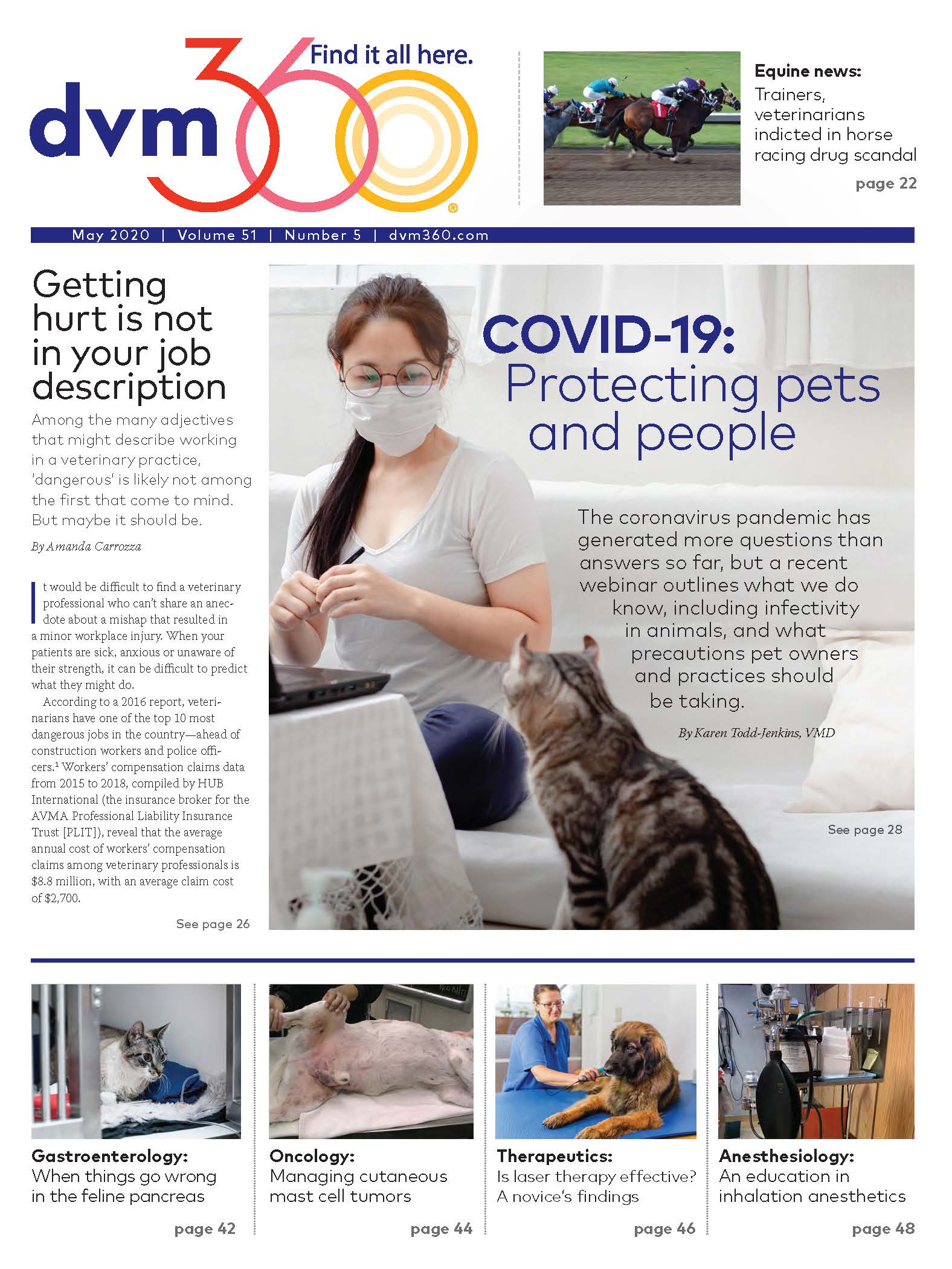A low-tech approach to diagnosing anemia
Successful management of anemia in dogs and cats requires an accurate diagnosis and treatment of the underlying disease process. Three simple tests can help facilitate the diagnosis by classifying a patients anemia as blood loss, hemolysis, or decreased production.
Deyan Georgiev/Shutterstock

Anemia is a common presenting complaint that often manifests with lethargy, anorexia and other nonspecific signs. Animals can also develop anemia while hospitalized as the result of underlying disease processes, surgical complications or medical interventions. At Fetch dvm360 conference in Baltimore, L. Ari Jutkowitz, DVM, DACVECC, provided practical tips for approaching the diagnosis of this important clinical condition.
Dr. Jutkowitz recommends focusing first on diagnosis and quickly trying to categorize the anemia into one of three broad categories related to cause: blood loss, blood cell destruction (hemolysis) or decreased blood cell production. The list of differentials is finite if one can categorize initially by these three causes.
Immediately after assessing the patient's stability, three simple tests will provide valuable information about the cause of anemia. All three tests require less than about five minutes to perform and can be done as part of the initial exam. The results allow for a more focused discussion with the owner about next steps and creation of a more targeted diagnostic plan.
Packed cell volume/total solids
The first thing to evaluate is the packed cell volume (PCV; the percentage of red blood cells in a blood sample) and total solids (TS). Blood for evaluating these parameters can often be obtained from the hub of a catheter during placement. PCV must always be interpreted in conjunction with another blood constituent such as TS. Decreases in both values mean the patient is losing plasma and blood cells, and blood loss is likely. Conversely, if PCV is low but TS values are normal, whatever is happening is affecting only red blood cells and must be either hemolysis or decreased production.
It can also be useful to look at the color of the serum. An orange pigment indicates bilirubin, which suggests extravascular hemolysis. Red pigment is likely due to blood cells rupturing during circulation, and intravascular hemolysis should be suspected. The diagnostic differential and prognosis will change depending on whether intravascular or extravascular hemolysis is present.
Blood smear
Next, a blood smear should be evaluated. Blood smears are useful for differentiating hemolysis from decreased production anemia. The presence of significant polychromasia and anisocytosis may indicate a regenerative response. Alterations in cell morphology or evidence of parasites should also be assessed. If many cells have Heinz bodies (bulging red cell membranes), then oxidative damage is occurring and may be due to a toxin such as onions, ethylene glycol or garlic. Babesia canis will appear as a tear-shaped organism within the red cells. Ghost cells are red blood cells that have ruptured membranes such that the cell loses its hemoglobin and only the membrane and free hemoglobin remain. These can be indicative of intravascular hemolysis. Spherocytes are small, round cells that are seen in approximately 80% to 90% of dogs with immune-mediated hemolytic anemia (IMHA). Spherocytes are formed when a phagocytic cell recognizes and ingests antibody bound to the red cell membrane. The red cell re-forms small and round and lacking central pallor. A large number of spherocytes is common with IMHA, but IMHA shouldn't be ruled out when this is not noted.
Saline dispersion
The third test is the saline dispersion, or slide agglutination, test. This should be performed when there is evidence of hemolysis or when agglutination of blood cells is visible. Mix a drop of anticoagulated blood from a purple-top or capillary tube with five drops of saline on a slide. Then, evaluate the slide for clumps or flecks-true agglutination-forming in the sample. The saline is added to differentiate from rouleaux. (Rouleaux can form in states of inflammation but will disperse with saline, whereas true agglutination will not.) Autoagglutination is caused by cross-linking of antibodies bound to the erythrocyte membranes. When seen, this indicates an underlying immune component to the hemolysis.
Conclusion
Because a number of diseases may result in anemia in veterinary patients, successful management of the condition relies on accurate diagnosis and treatment of the underlying disease process. To facilitate the diagnosis, three simple tests can help classify a patient's anemia as blood loss, hemolysis or decreased production. Initiation of immunosuppressive therapy before performing a methodical search for infectious, neoplastic or other causes of anemia may result in therapeutic “missteps” and treatment failure.
Dr. Miranda Spindel serves as the shelter medicine consultant and student advocate for VIN. She initiated and completed the first residency in shelter medicine with a master's of clinical sciences through Colorado State University in 2007, and then worked as the senior director of shelter medicine at the ASPCA for 10 years. She is a member of the Shelter Medicine Organizing Committee and Residency Committee for Shelter Medicine for ABVP. Dr. Spindel lives on a small acreage in Colorado with her daughter and dogs, cats, chickens, horses and donkeys.
